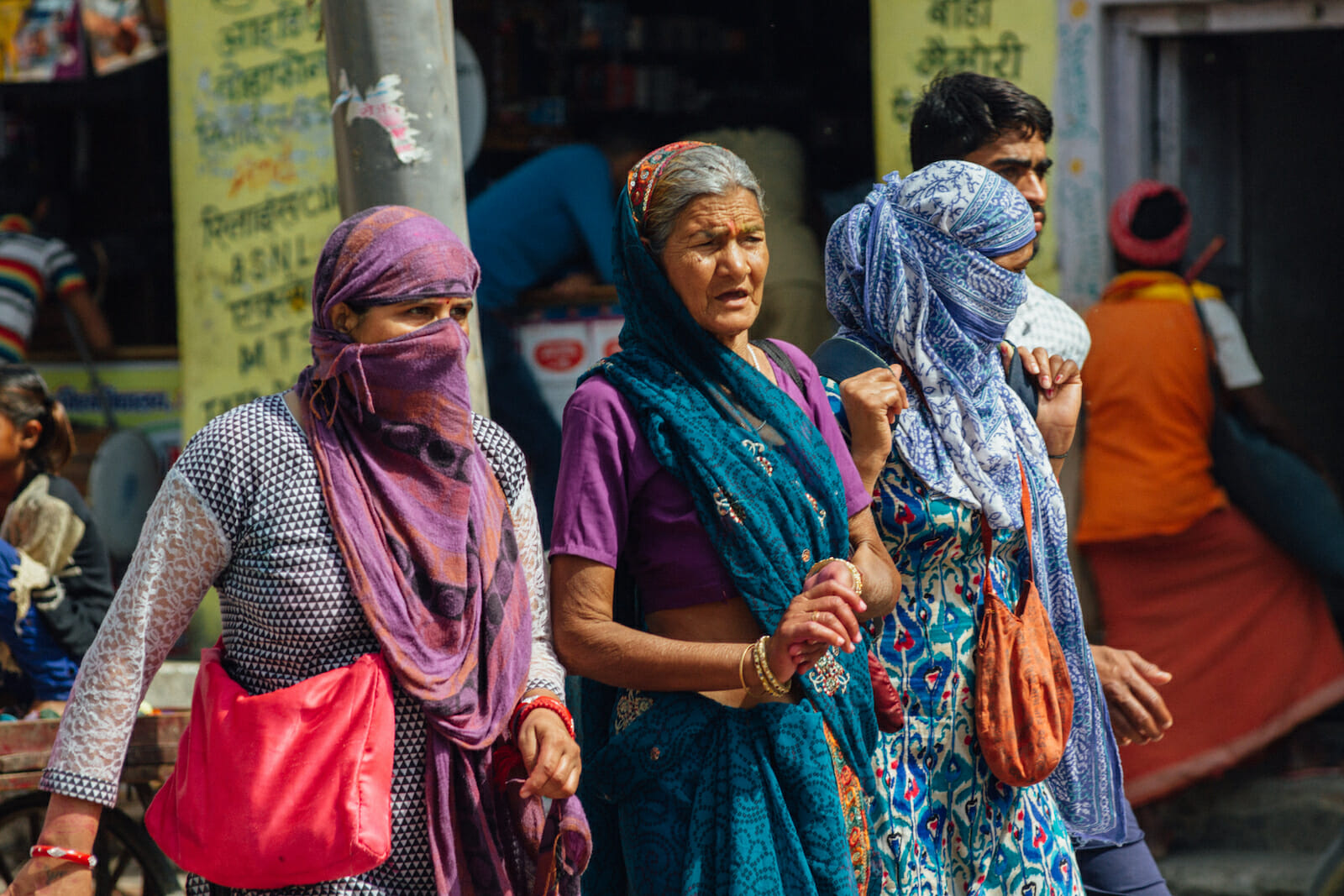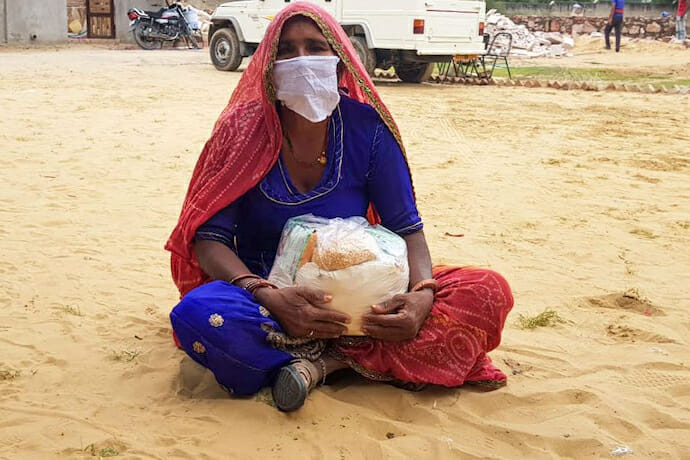
A Billion In Lockdown: What COVID-19 Means For India’s Women Informal Workers
India’s famously chaotic and noisy streets have fallen silent and wear a desolate look since the country’s prime minister, Narendra Modi, announced a nation-wide lockdown on March 24, 2020. The lockdown was in response to the rising incidence of COVID-19 in the world’s most populous democracy. India’s COVID-19 count is in the thousands, with more than 400 dead.
On the heels of the health crisis, that is already testing India’s frail healthcare system, comes an economic slowdown that has far-reaching consequences, especially for the country’s poor. India is currently one of the fastest-growing economies in the world, registering a GDP growth rate of 6.8%. However, unlike many developed nations, especially in the West, its economy is overwhelmingly informal. The International Labour Organization even estimates that informality accounts for over 80% of India’s economy.
Informal workers clearly drive India’s economy. In major cities like New Delhi, Mumbai and Bangalore, informal workers – both, men and women – provide goods and services that support businesses and economic activities of all scale. In plush, air-conditioned offices, they take up roles in housekeeping, security, and transport so that those in the formal sector can work in comfort. Street vendors sell everything from vegetable produce to fresh food. Domestic workers keep homes up and running while waste pickers thanklessly clear waste from homes and streets and also enable recycling efforts. Home-based workers, who largely work out of informal settlements, make products that travel to domestic markets and across the globe.
In rural India, that is largely geared towards agriculture, informal workers take up work as farm laborers. A large section of farm labor involves internal migrants – who travel hundreds and thousands of miles to greener pastures to make a living and support families back home.
Informal workers form the very backbone of India’s economy. Yet, they receive no benefits for doing so. Informal sector workers find themselves at the bottom of the pyramid – making meagre wages and often falling out of the purview of social safety nets. The inequalities that they routinely face and the government’s apathy when it comes to addressing their needs is more apparent than ever as COVID-19 becomes a reality.

In the days following the announcement of the lockdown, informal workers have been the first to take the fall. As businesses scale down, restaurants and markets close, delivery services come to a halt, construction sites fall silent, and streets are cleared – informal workers have lost their jobs and their incomes. This has led to a mass exodus of migrant workers who choose to return to their homes in rural suburbs and far-flung villages since they cannot fathom paying for two-square meals and home rents in big cities. With no support forthcoming from the government, thousands have chosen to walk back home, covering journeys of thousands of miles, carrying young children in their arms and their handful of belongings on top of their heads. Newspaper reports have indicated that more than a dozen migrants have perished on highways and on dirt-laced roads.
Those who choose to stay back haven’t had it any easier. Street vendors who continue to provide essential commodities have been subject to police harassment. Waste pickers risk their own health and work tirelessly without protective gear to keep neighborhoods clean. Domestic workers have been shunted out of jobs, with little to no compensation, as their employers fear that they will bring the contagious virus into their comfortable homes. And home-based workers face grave income insecurity as global supply chains implode.
The COVID-19 crisis is also highlighting and deepening gender disparities. Women’s participation in India’s labor force has seen a steady decline over the past decade. Only 23% of women have found employment in this rising economic superpower. And they are largely concentrated in the informal sector – taking up low-paying, labor-intensive jobs that do not offer social security.
Home-based work is one such option. Home-based workers are those who produce goods and services from in and around their homes. In 2011-12, India’s National Sample Survey – a labor force survey – estimated that there are approximately 37.4 million home-based workers in the country. Of these, 16 million are women. Women in India and across South Asia take up home-based work due to the lack of work opportunities and the unfair burden of care work that falls squarely on their shoulders. There is also a lack of mobility that keeps women inside homes because of societal norms and equally because of the lack of safe and reliable public transportation.
In India, women home-based workers can be found in a range of industries. They are the last and often invisible rungs in global and domestic supply chains. And they typically work in major sectors like garment and textile exports, the automotive industry, the assembly of medical equipment and handicrafts. Usually, and this is especially true for the garment industry, women home-based workers take on the excess work that factories cannot fulfill or low-end jobs – like packaging and assembly – that factories and export houses do not want to spend a lot of resources on.

In the Global South, it is a well-documented fact that factory workers, who are part of global supply chains, receive inadequate wages and face other insecurities (including violence and harassment at the workplace in the case of women). In comparison, women home-based workers make far less and also take on the costs and risks of production.
Often, corporations are unaware of home-based workers in their supply chains or fail to acknowledge their presence. They get away with it because governments, in many parts of the world, including India, do not recognize home-based workers as workers and do not afford them legal protection. India has yet to ratify ILO’s Convention 177 that was passed in 1996. The Convention outlines homework, the need for states to recognize homeworkers and the protections that states need to extend to them including the formulation of national policies that assures them equal worker rights and their inclusion in labor statistics.
So, without the support of the state, these invisible and unacknowledged workers are left to grapple with the loss of work and much-needed income as the pandemic unsparingly makes its way across the globe.
Home-based workers in India have, in fact, been the first to feel the effects of the economic fallout. Orders have dried up and pending payments cannot be accessed as workers cannot reach their contractors during lockdowns and when they do, contractors claim that they themselves have yet to receive due payments. Before the pandemic, home-based workers – in garment supply chains, for instance – were making a meagre one or two dollars a day. Their earnings have now dwindled to nothing. Without their earnings, home-based workers, and their families are unable to afford basic food stuffs and medical supplies. And in the coming months, if they are unable to return to work, their children will be forced to drop out of school and the dependent elderly may not be able to access healthcare at a critical time.
To keep millions from being pushed into further marginalization, it is important for both governments and corporations to protect these workers. In the short-term, governments will have to step up with income support and food distribution programs that cover all workers, including those who are not recognized by law. Additionally, governments can create income-generating opportunities for out-of-work women home-based workers by engaging them in the production of much-needed protective masks and hospital gowns.
Corporations and brands too will need to shoulder their share of responsibility and accept and pay for orders that are ready to be delivered and for those that are in the pipeline. They will need to pressure export houses and other intermediaries into ensuring that payments reach all tiers of their supply chains. They will also have to continue providing the work to the region and stand by workers whose work has brought them profits for decades.
Post COVID-19 efforts will have to continue to rehabilitating local economies and livelihoods through recovery funds and financial assistance like low-interest loans. But above all, recognizing these workers will be key. Governments will have to recognize home-based workers and others as contributors to India’s economy and include them in policies and programs. Similarly, corporations too will have to invest in mapping exercises that shine a light on the hidden workers in their supply chains and ensure they receive fair wages and adequate social security. Because if these workers continue to remain in the shadows, the next time around it may take something far less threatening than a contagious virus to wipe out these workers along with India’s much-celebrated economic success story.

